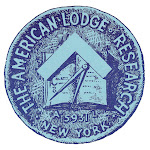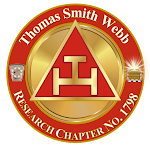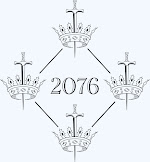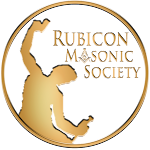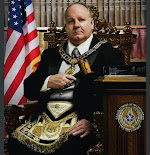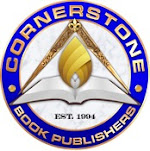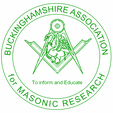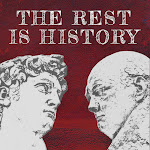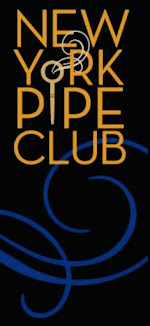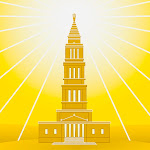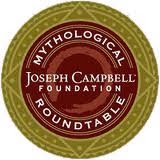First, some clarity of the word “occult,” because there are too many people with Sunday school mentalities. From John Michael Greer’s The Element Encyclopedia of Secret Societies and Hidden History:
“Derived from the Latin word occultus, “hidden” or “secret,” the word “occult” was first applied to magic in the late Middle Ages. Until very recent times it was an adjective rather than a noun: the first recorded use of “the occult” in English dates from 1923, while “occultism” is only a little older, dating from 1881. Before then, magic and its sister arts, such as alchemy and astrology, were called “occult sciences” or “occult philosophy,” meaning simply that they were hidden and abstruse.”
Okay? In today’s usage, it is synonymous with esoteric.
Here now the news:
Next month, New York University will co-host, with Phantasmaphile and Observatory, a weekend conference to present a variety of scholars, researchers, and artists who explore various occult traditions. The Occult Humanities Conference: Contemporary Art and Scholarship on the Esoteric Traditions will take place October 18-20 at the Barney Building, the home of NYU’s Steinhardt School of Culture, Education, and Human Development, located at 34 Stuyvesant Street in the East Village.
From the publicity:
 |
| Courtesy OHC |
Intensely marginalized throughout most historical periods, these traditions persist and represent an ‘underground’ perspective that periodically exerts a strong influence on structures of dissent, utopianism and social change. Though history is marked with several so-called “Occult Revivals,” the contemporary digital age is a perfect confluence of several factors that make this moment prime for a re-examination of all of the esoteric traditions. While the information age has allowed for easier access to previously obscure writings, imagery, and social contexts, it alternately elicits a deep desire for sensorial experiences and meaning-making once one steps away from the screen.
The presenters at the OHC represent a rich and expanding community of international artists and academics from multiple disciplines across the humanities who share an exuberance and excitement for how the occult traditions interface with their fields of study as well as the culture at large. The small scale of this conference (approximately 100 attendees) will give ticket holders an intimate look at the presenters and their views.
The visually oriented presentations will be coupled with exhibition of artworks by several presenters and artisanal books from Fulgur Esoterica and Ouroboros Press. Books and editions from Fulgur Esoterica, Ouroboros Press and Catland will be available for sale throughout the duration of the conference.
The British-born Mexican Surrealist Leonora Carrington created a large body of work including paintings, drawings, sculpture, tapestries, jewelry, theatrical scenery and costumes, as well as a significant amount of fiction (short stories, plays, novellas). Much of the content of her work has been deemed undecipherable and has thus been relegated to the realm of nursery rhyme, surrealist fantasy and mythology. This presentation will use a previously unpublished drawing of Carrington’s as a jump off point with which to explore the artist’s occult interests, which were wide-ranging and actually clearly articulated in her work. The esoteric artwork of other Surrealists, many of whom were her friends, will be used as points of comparison.
Susan L. Aberth is Associate Professor of Art History at Bard College, Annandaleon-Hudson, New York. She teaches modern Latin American art, with a particular interest in Surrealism and religious traditions. She also teaches Latin American art at the Christie’s Education Master of Arts Program, New York. Author of Leonora Carrington: Surrealism, Alchemy, and Art (Lund Humphries, London and in Spanish with Turner, Madrid, 2004); Agustín Fernández: The Metamorphosis of Experience (with Donald Kuspit, Rocio Aranda-Alvarado and Abby McEwen) (5Continents, Milan, 2012); and numerous other articles and catalogue essays. In addition to the art of Latin America, her teaching and research interests are in outsider art, fraternal orders, the occult, religion and popular culture.
Until modern times there was no division between the branches of magic. Acep Hale will be presenting a collection of classic street performing tricks that have been passed down through centuries in a continuous link from the times when magicians wandered the earth, entertaining, healing, and divining for the communities they traveled through.
Acep Hale is a street-performing magician, musician, traveler, and rogue gentleman scholar. Driven by the 19th century belief in propaganda by deed he performs daily on street corners everywhere to prove that magic still lives around every bend, you don’t need a nine to five to stay alive, and hope springs eternal between the cracks of every sidewalk.
Austin Osman Spare was an English occult artist working in the early-to-mid 20th Century. In this 45-minute audio-visual journey, we are invited to explore Austin Spare’s approach to creating magical art through an analysis of his own words and images. His liminal methods are then compared with composers working during his lifetime. The lecture includes a soundtrack by John Contreras (of Current 93 and Baby Dee) that was composed uniquely for this presentation.
Robert Ansell is a publisher, art dealer, curator and scholar. His field of expertise is esoteric art of the 20th century with a specific focus on Austin Osman Spare. Through his company Fulgur Esoterica, he has represented esoteric artists in book form since 1992. In recent years he has also gained note as an independent art curator specializing in the esoteric. Robert is also the publisher and art editor of Abraxas Journal, which has been described as today’s pre-eminent voice for the serious study of occult and esoteric expression. His published work includes; AOS Ex-Libris (1988), The Book of Ugly Ecstasy (1996), Borough Satyr (2005), The Valley of Fear (2008), The Exhibition Catalogues of Austin O. Spare (2011) and The Focus of Life (2012). He has been interviewed for the BBC Culture Show, the blog Boing Boing, and Dazed and Confused.
In the summer of 2013 Jesse Bransford completed a long-term project involving a study of the seven planets of antiquity. Begun in late 2004, The seven celestial bodies, the Sun, Mars, Mercury, the Moon, Venus, Jupiter and Saturn were each taken in turn and studied for approximately a year. The research generated seven discreet bodies of work that trace the self-initiation of the artist into a much larger (and stranger) world.
Jesse Bransford (Conference Co-organizer) is a Brooklyn-based artist whose work is exhibited internationally at venues including the Carnegie Museum of Art, the UCLA Hammer Museum, PS 1 Contemporary Art Center and the CCA Wattis Museum among others. He holds degrees from the New School for Social Research (BA), Parsons School of Design (BFA) and Columbia University (MFA). An associate professor of art at New York University, Bransford’s work has been involved with belief and the visual systems it creates since the 1990s. Early research into color meaning and cultural syncretism led to the occult traditions in general and the work of John Dee and Henry Cornelius Agrippa specifically. His work is represented by Feature Inc. in New York and can be seen extensively documented on the website sevenseven.com, a site he has operated and maintained since 1997.
Elijah Burgher will give an artist’s talk about his drawings and paintings. He will also discuss the influence of artist-sorcerors, such as Austin Osman Spare, William S. Burroughs, Genesis P-Orridge and John Balance, on his work.
Elijah Burgher (b. 1978, U.S.A.) is an artist and occasional writer, currently living in Chicago. He makes drawings and paintings that utilize ideas from magick and the occult to address sexuality, sub-cultural formation and the history of abstraction. He has exhibited in solo shows at Western Exhibitions, Chicago (2012, 2013); 2nd Floor Projects, San Francisco (2011); and Shane Campbell Gallery, Oak Park (2010); and two-person shows at Lump, Raleigh (2012); and Peregrine Program, Chicago (2009). Recent group shows include exhibitions at the Witte de With, Rotterdam (2013); H.F. Johnson Gallery of Art, Kenosha (2012); 92YTribeca (2012), Anna Kustera (2011), and Envoy Enterprises (2010), New York City; Famous Accountants, Brooklyn (2011); and Noma, San Francisco (2011). Burgher has taught in Contemporary Practices and Painting and Drawing since Fall 2010. Recent publications include Vitamin D2 (Phaidon, 2013) and AA Bronson.
That Cornell University Library has “the largest and most accessible collection on witchcraft in the world” is widely acknowledged in the academic community, but the whole story of why and how it was built (in the context of both scholarship and political activism) still needs to be told in details. Driven by their liberal/rationalist agenda and by their populist/sentimentalist interpretation of European witch-hunt, two historians, Cornell’s first President Andrew Dickson White (1866-1885) and librarian George Lincoln Burr (who retired in 1922), purchased the largest ensemble of witchcraft trial records and demonology treaties in one repository. Decades later, Cornell acquired the library on occultism of Kurt Seligmann, “the magic expert of the Surrealist group.” In this talk, Laurent Ferri will discuss the formation, use, and occasional misuse, of the amazing and still expanding Cornell Witchcraft Collection.
Laurent Ferri is the curator of the pre-1800 collections of rare books and manuscripts in Kroch Library, Cornell -- where he also holds the position of Adjunct Professor of Comparative Literature and Medieval Studies. Prior to coming to New York State, he worked at the National Archives in Paris, and also taught at the école nationale d’administration in Rabat, Morocco.
The word “pagan” means “of the country,” yet so many city-dwellers have magical inclinations and pantheistic leanings. How do we reconcile our metaphysical hunger with our decidedly industrial surroundings? In this meditation on the occult and urban living, with a special focus on New York City, Pam Grossman will explore the idea of art as a conduit between civilization and the divine.
Pam Grossman (Conference Co-organizer) is an independent curator, writer, and teacher of magical practice and history. She is the creator of Phantasmaphile, a blog which specializes in art and culture with an esoteric or fantastical bent, and the Associate Editor of Abraxas International Journal of Esoteric Studies. As co-founder of the Brooklyn arts & lecture space, Observatory, her programming aims to explore mysticism via a scholarly yet accessible approach. Her group art shows, Fata Morgana: The New Female Fantasists, VISION QUEST, Alchemically Yours, and Sigils & Signs have been featured by such outlets as Boing Boing, Art & Antiques Magazine, CREATIVE TIME, Time Out New York, Juxtapoz, Arthur, 20×200, UrbanOutfitters.com, and Neil Gaiman’s Twitter. She lectures on such topics as “The Occult in Modern Art 101,” and teaches classes on herbalism and ritual. Her writing has appeared in numerous mediums, including The Huffington Post, MSN.com, the Etsy blog, Sciences Occultes magazine, and various Fulgur press publications. As a featured guest on The Midnight Archive web series, Expanding Mind radio, Occult Science Radio, and the C-Realm, Psychonautica, and Labyrinth podcasts, she has discussed the role of magic in contemporary life. Pam is a graduate of New York University, where she studied anthropology, art history, and comparative religion. A resident of Brooklyn, she lives with her playwright husband, Matthew Freeman, and their two cat familiars, Albee and Remedios “Remy” Varo.
This illustrated lecture will explore the rich artistic and philosophical legacy of Ithell Colquhoun (1906-88). Colquhoun, who was formally associated with British Surrealism for a short time in the late 1930s, was situated at the nexus of British esoteric thought and culture in the mid 20th century. Through her work we can examine the emerging social and cultural contexts of several strands of British esoterica, including Wicca, Druidry, traditionalist witchcraft, and Hermetic magic. Furthermore, Colquhoun anticipates, by decades, movements such as Goddess religion and British earth mysteries. Just as importantly, Colquhoun’s oeuvre provides us with a rare working record of a female occultist working in a male dominated milieu, who dedicated nearly her entire life to magic and the pursuit of enlightenment, always without compromise.
Amy Hale, Ph.D. (Golden Gate University) is an Anthropologist specializing in contemporary Celtic cultures with an emphasis on Cornwall and esoteric cultural history. She is the co-editor of New Directions in Celtic Studies (2000) and Inside Merlin’s Cave: A Cornish Arthurian Reader (2000) in addition to writing over 30 other articles ranging in topic from Neo Druidry to Celtic cultural tourism. She is the past co-editor of the Journal of the Academic Study of Magic (with Susan Johnston Graf), and is working on a biography and several other projects related to the life and work of of Ithell Colquhoun (Francis Boutle).
The Royal Art of Alchemy has a long tradition of transmutation. The literature is among the most artistic and thereby recognized, practices in the western esoteric tradition. Despite this fact, alchemy is also one of the most misunderstood arts in the tradition due to the confusion arising from the enigmatic language and imagery employed by its authors. A cursory glance reveals an apparent dichotomy between allegorical and practical methods as expressed by 20th century exponents of the art. Images in alchemy that depict specific alchemical operations along with allegorical references will accompany an explicatory presentation. As various operations in the tradition customarily take place in distinct vessels, ovens and crucibles, several images will be shown where the two methods work in concert.
William J. Kiesel is the director of Ouroboros Press, Editor-in-Chief at CLAVIS Journal of the Art Magical and the founder of the International Esoteric Book Conference. His personal research into variant currents of Western Esotericism and the History of the Book has been augmented by participation in the antiquarian and scholarly book trade dating back to 1991. A strong supporter of Book Arts, his role also includes independent scholarship, art curation and public speaking in the complex and intriguing world of esoterisicm.
Gary Lachman is the author of more than a dozen books on the meeting ground between consciousness, culture, and the western esoteric tradition, including Madame Blavatsky: The Mother of Modern Spirituality, Rudolf Steiner: An Introduction to his Life and Work, Turn Off Your Mind: The Mystic Sixties and the Dark Side of the Age of Aquarius, A Secret History of Consciousness, The Quest for Hermes Trismegistus, and mostly recently The Caretakers of the Cosmos. He is a regular contributor to several journals in the US and UK and regularly lectures on his work in the UK, Europe, and US. In a prior life Lachman was a founding member of the rock group Blondie and in 2006 was inducted into the Rock and Roll Hall of Fame. He was born in New Jersey but since 1996 has lived in London, England.
Mitch Horowitz is vice-president and editor-in-chief at Tarcher/Penguin, the division of Penguin books dedicated to metaphysical literature. He is the author of Occult America (Bantam), which received the 2010 PEN Oakland/ Josephine Miles Award for literary excellence. His new book, One Simple Idea: How Positive Thinking Reshaped Modern Life, is forthcoming from Crown in January 2014. Horowitz frequently writes about and discusses alternative spirituality in the national media, including CBS Sunday Morning, Dateline NBC, All Things Considered, The Wall Street Journal, The Washington Post, and CNN.com. Visit him online at www.MitchHorowitz.com and on Twitter @MitchHorowitz.
“If, as Arthur C Clarke famously observed, any sufficiently advanced technology is indistinguishable from magic, then can we accept that any sufficiently advanced magic is also indistinguishable from technology?” In this illustrated presentation, Mark gives a historical overview of psychotronic devices—the radiant collision point of magic, art and technology. Psychotronic devices fuse aspects of vitalism, electromagnetic field theory and psychic sciences like telepathy, psychometry and dowsing. From an orthodox materialist perspective they are cargo cult technology, a fantasy of science. But it is too simple to reject all psionic devices out of hand as deceptions or slight-of-mind; Instead, we can perhaps best understand them as technological adaptations of ancient, sympathetic magical practices, a magic that feeds on, and is fuelled by, the conviction of both the practitioner and the subject. Mark will look the development of psychotronic technologies from the 19th century to the present, a journey that incorporates experimental medicines, science fiction fandom and some of the world’s most prestigious art galleries.
Mark Pilkington is the author of Mirage Men (now a feature documentary film) and Far Out: 101 Strange Tales from Science’s Outer Edge and has written for numerous magazines, anthologies and journals. Mark is the overmind at Strange Attractor, publishing books and curating events and exhibitions. When he’s not working with words you’ll find him fiddling with synthesiers and electronic sound making devices with a number of experimental music groups in his native London. www.strangeattractor.co.uk / www.radionicworkshop.co.uk
Shannon Taggart is a photographer and independent researcher based in Brooklyn, NY. Her work has been exhibited and published internationally. She curates a lecture series about the science and aesthetics of the miraculous. Currently, she is working on a book about Spiritualism and physical mediumship.
The Parlour Trick is a “haunted chamber music” project, founded by Meredith Yayanos in 2006. Recently, she and fellow multi-instrumentalist Dan Cantrell released an LP of spooky seance songs under The Parlour Trick moniker called “A Blessed Unrest”. Thematically, the record is very much a Madwoman in the Attic affair, steeped in melancholy, decay, ritual, channeling, agoraphobia, laudanum abuse.... lots of Grimm, grinning stuff. Hear more at theparlourtrick.bandcamp.com.
Meredith Yayanos is a musician, writer, traveler, and the co-founder/Editor-in-Chief of Coilhouse Magazine & Blog. Her theremin, violin, and vocal work has been featured on tracks with artists including The Dresden Dolls, Beats Antique, Faun Fables, The Vanity Set, David Garland and The Walkmen. She has also done score work for film and television, most notably the Victorian ghost story puppet short The Narrative of Victor Karloch, and the full-length psychological thriller, Empty Rooms.





